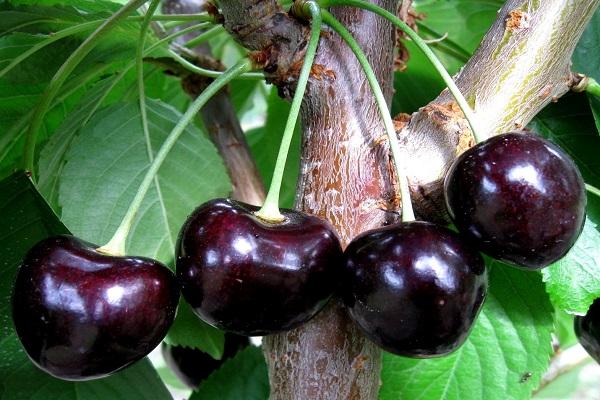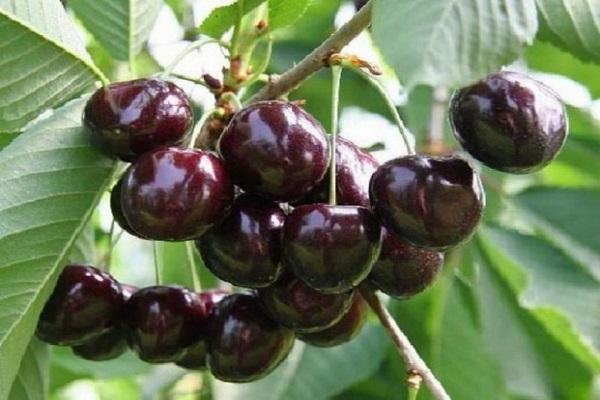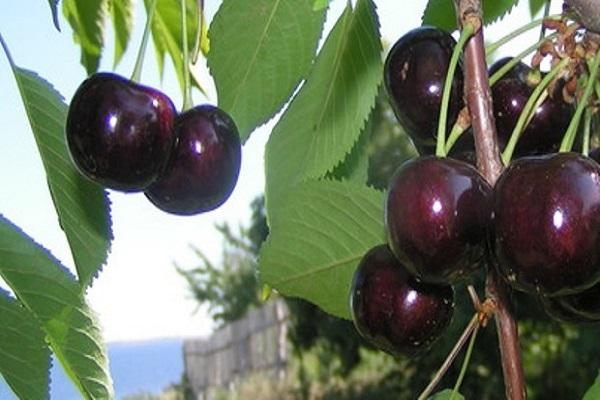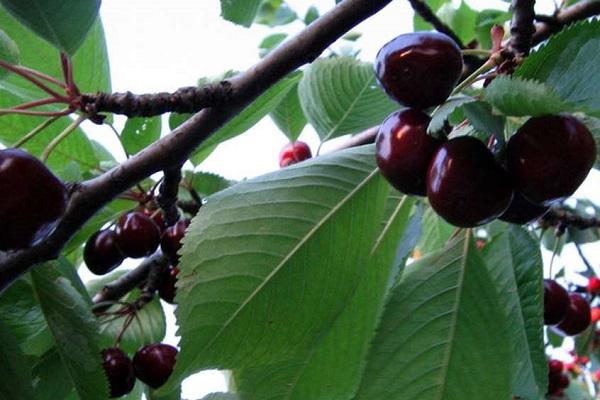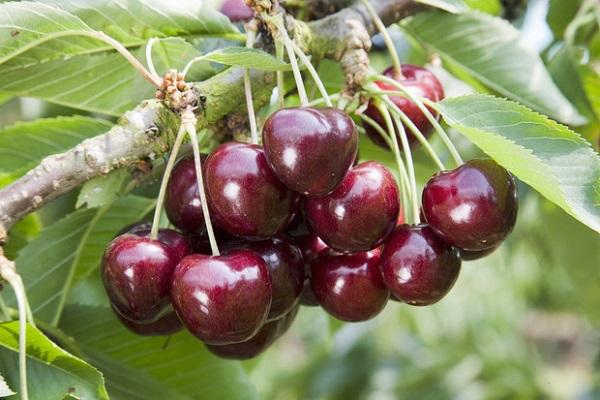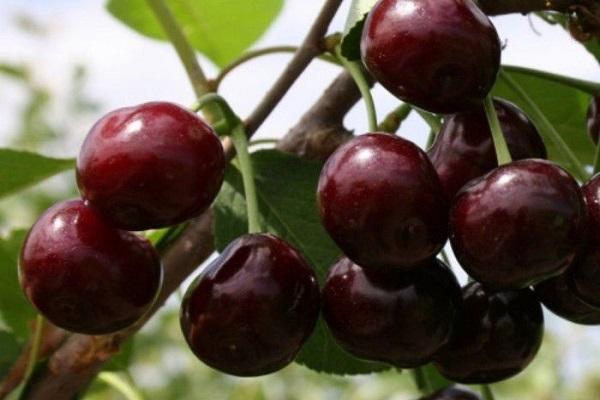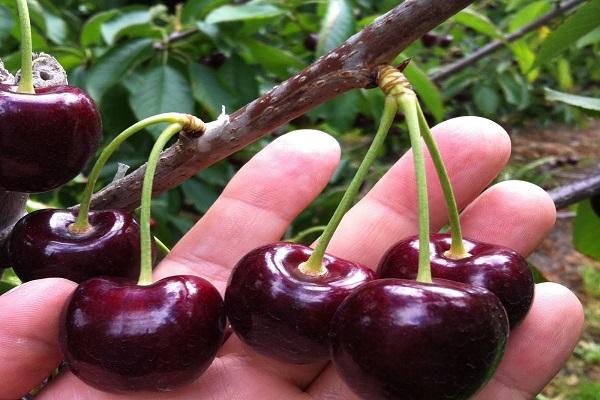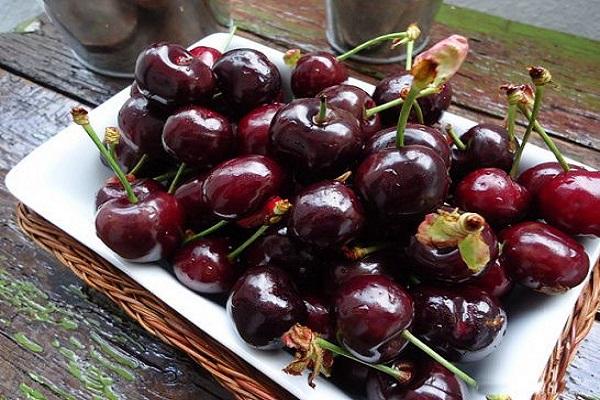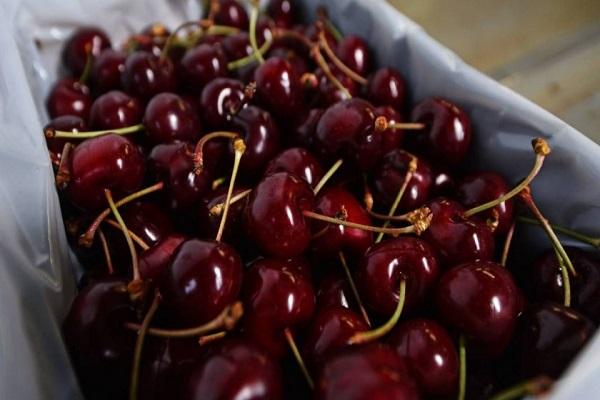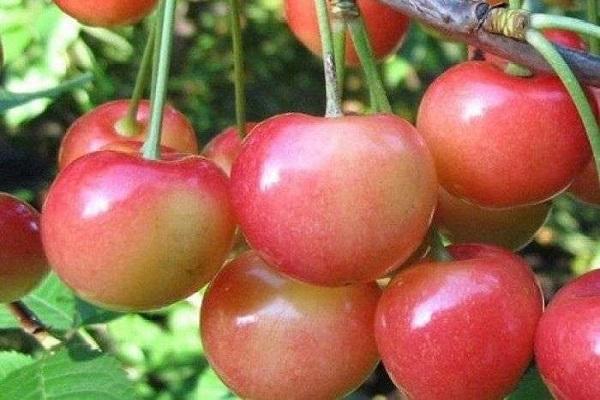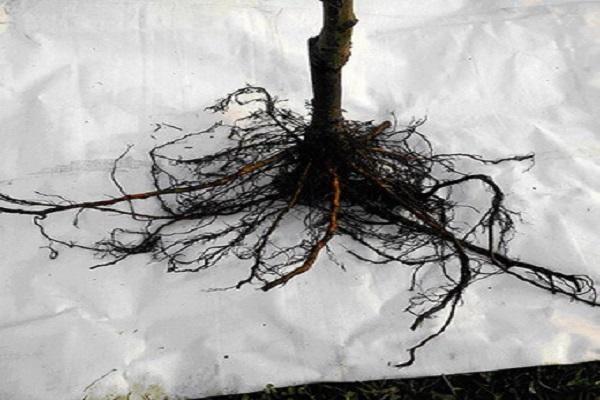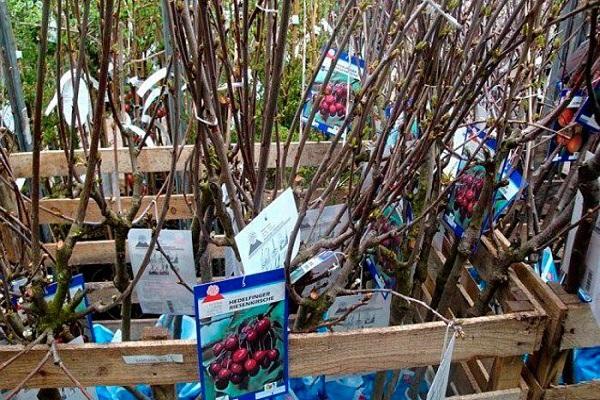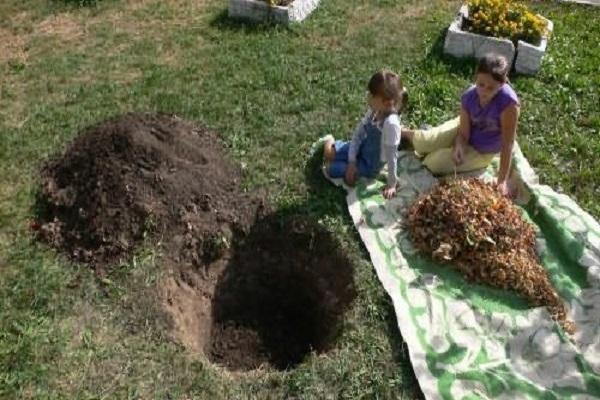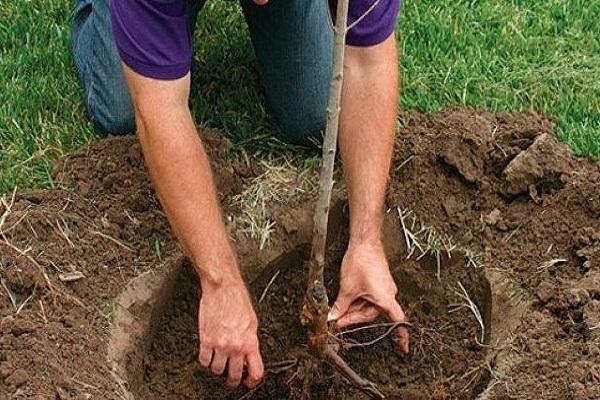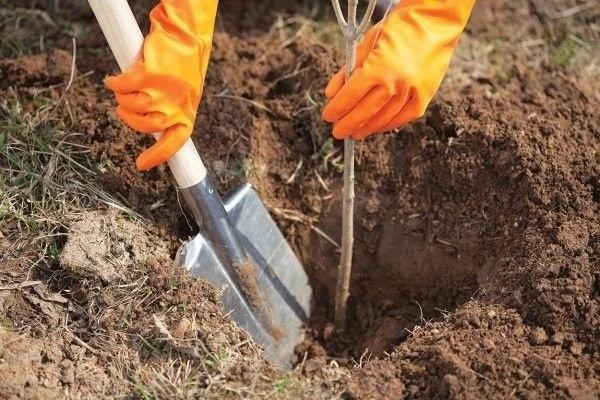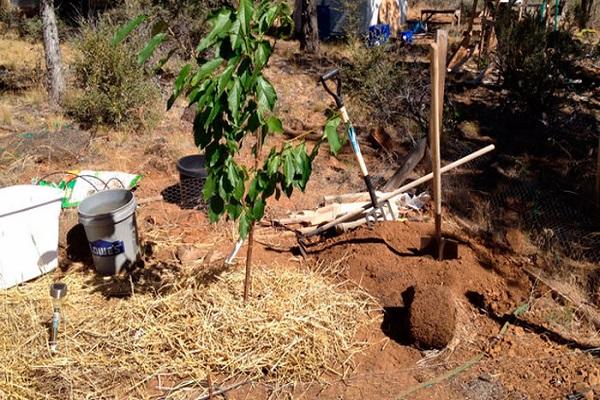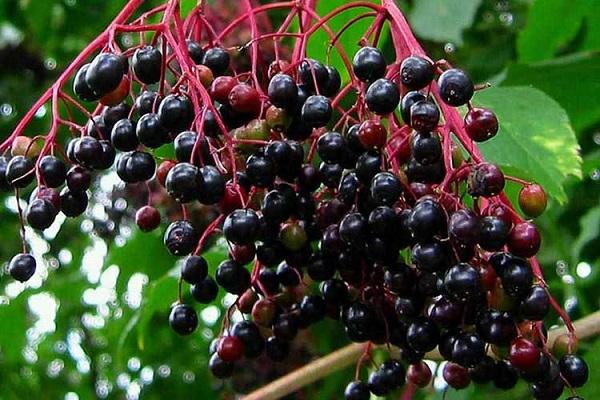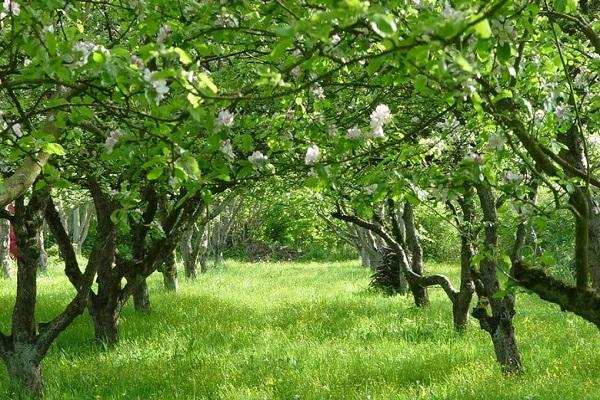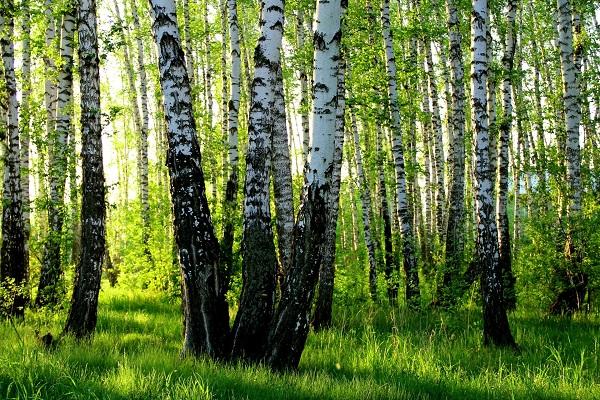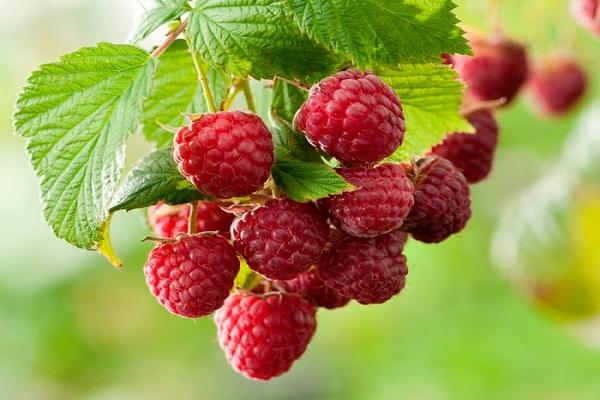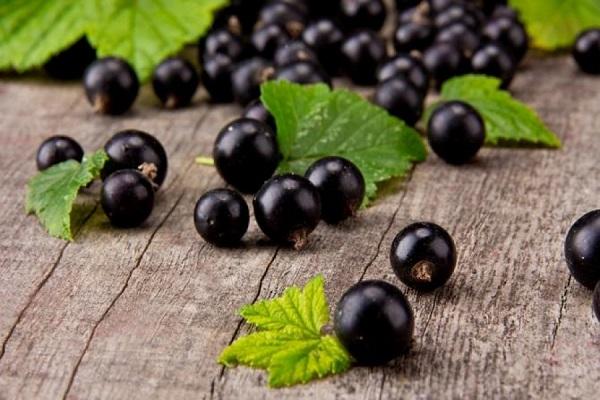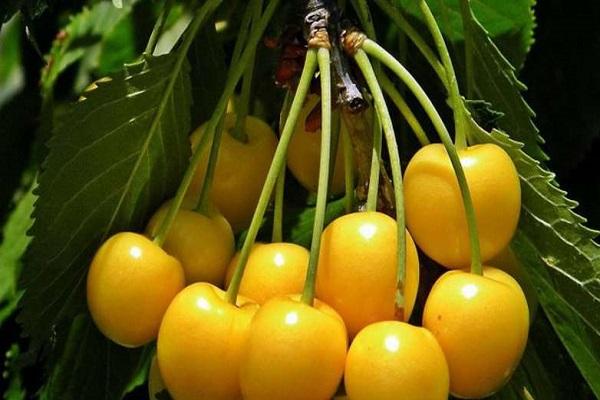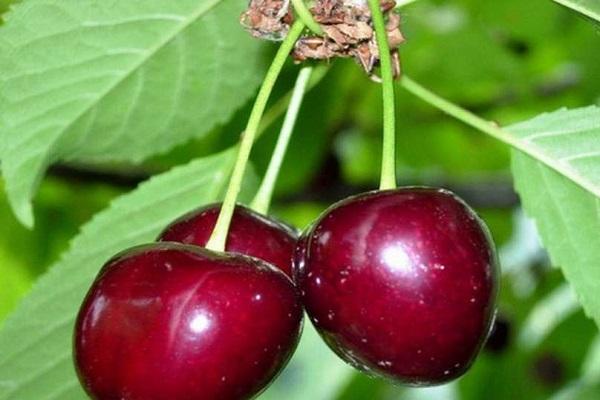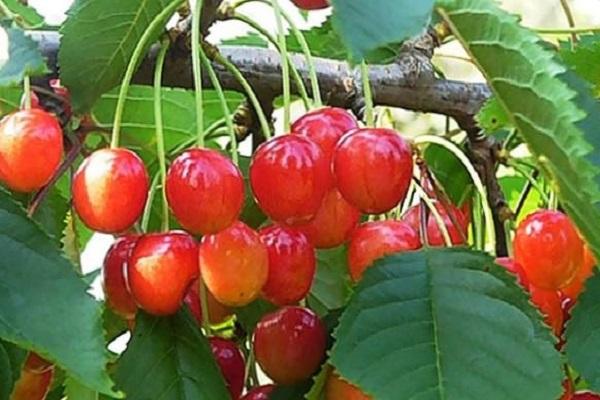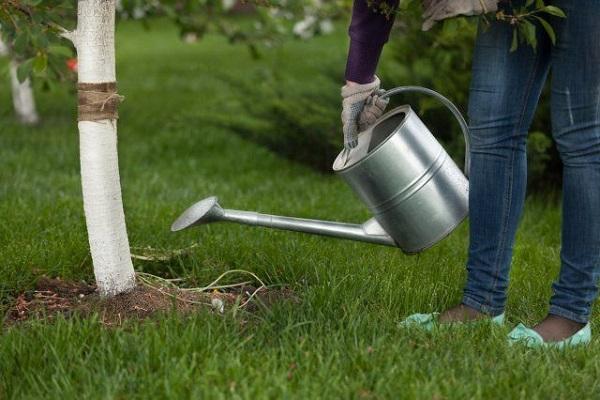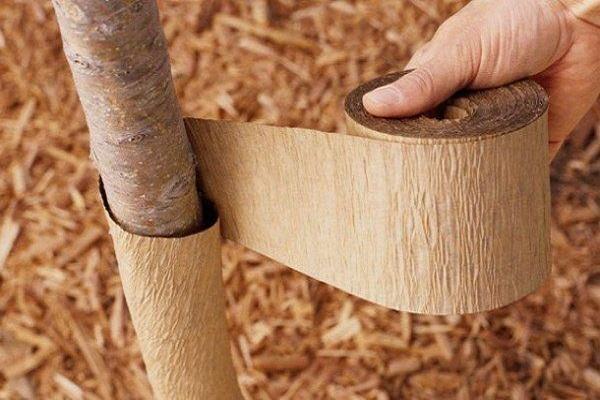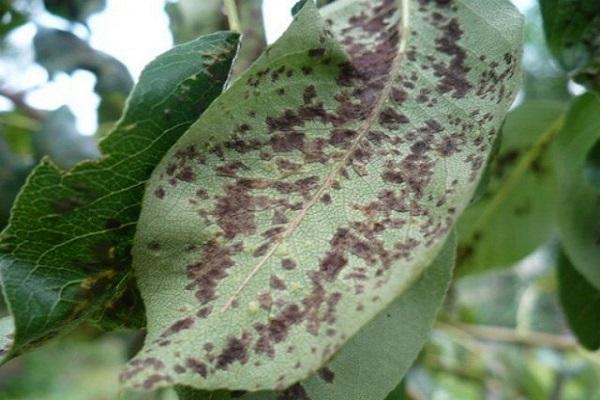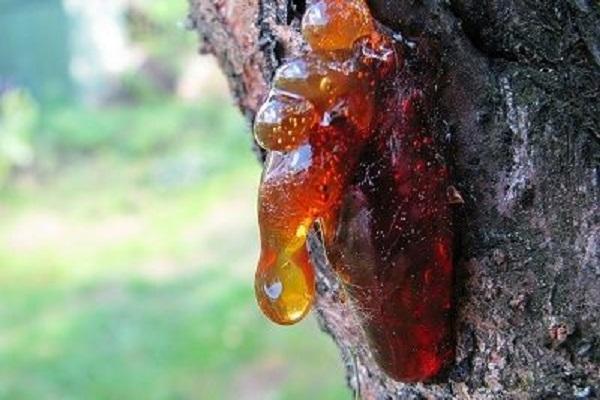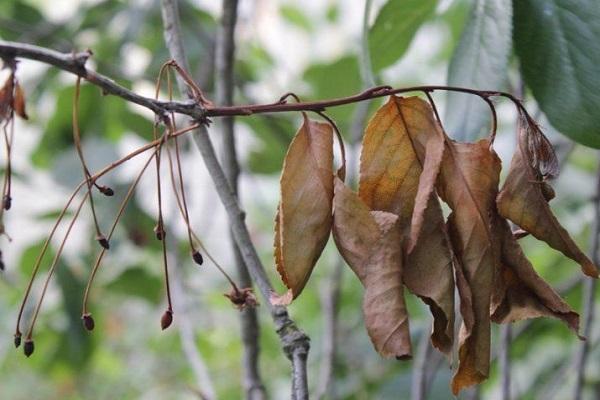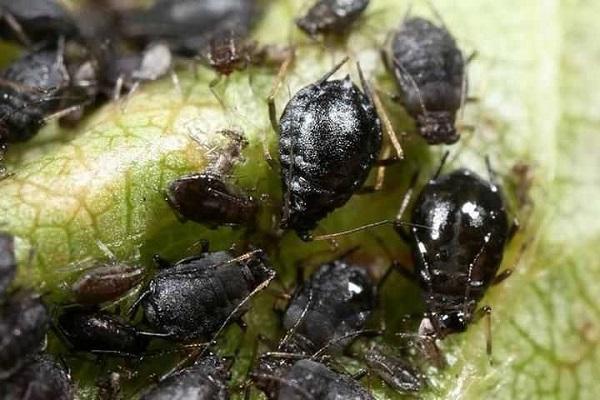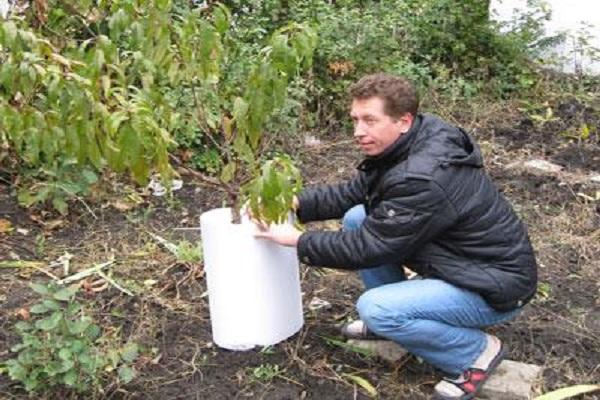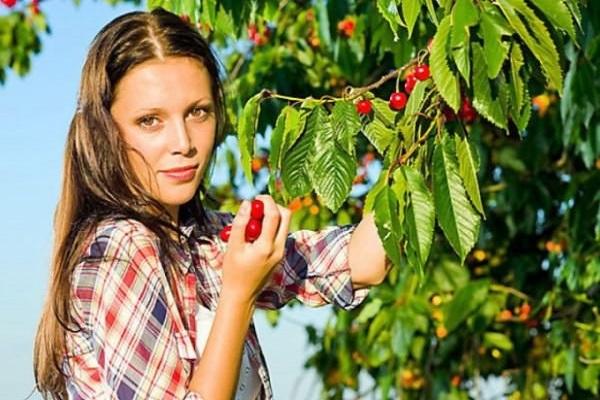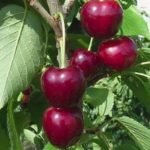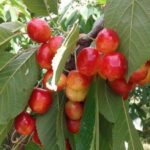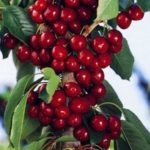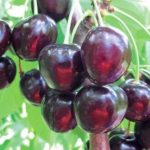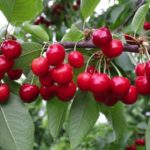The Daibera variety of cherries has been known to gardeners for more than a hundred years. An ancient species of the Rosaceae family has been well studied and tested in practice. Despite the emergence of new berry crops, it has remained competitive in terms of yield and fruit quality. The varietal type is bigarro, which means the table properties of the fruit (consumed raw and processed). Nutritional value lies in the high content of nutrients and excellent taste.
- How the variety was bred
- Description
- general description
- Advantages
- Flaws
- Bud
- Leaf and flower
- Fetus
- Weight
- Height
- Width
- Thickness
- Color
- peduncle
- Bone
- general characteristics
- Taste qualities
- Nutrient content
- Tree height and growth rate
- Flowering and ripening period
- Productivity
- Transportability
- Drought resistance
- Frost resistance
- Disease resistance
- Application of fruits
- Basic soil requirements
- Landing Features
- Selection of seedlings
- Root system
- Trunk
- Age
- Availability of vaccinations
- Choosing a landing time
- Site selection
- Pit preparation
- Landing
- Planting a garden
- What can and cannot be planted nearby
- Can
- It is forbidden
- Some fruit bushes
- Pollinators
- Black Eagle
- Golden
- Cassini early
- Bigarro Gaucher
- Gedelfinger
- Ramon Oliva
- Jaboulet
- Francis
- Secrets of care
- Watering
- Top dressing
- Trimming scheme
- Preparing for winter
- Prevention from diseases and pests
- Hole spot
- Brown spot
- Fruit rot
- Comedy flow
- Scab
- Monilial burn
- Cherry slimy sawfly
- cherry fly
- Ringed silkworm
- Cherry aphid
- Weevil
- Moth
- Frost protection
- Treatment in spring
- Harvest and storage
- Reviews
How the variety was bred
The variety was obtained without the participation of gardeners, in the second half of the 19th century, in the Crimea. The cherry tree got its name from the gardener who discovered and described the unknown variety. Official name – Daibera A. Chernaya. Amateur gardeners know it as Daibera or Crimean cherry.
Description
Subject to agrotechnical conditions, the tree produces consistently high yields.
The culture is zoned in the Krasnodar Territory, Volgograd, and Astrakhan regions. Growing in the northern regions causes freezing of fruit buds, flowers and ovaries, which reduces the fruiting of Daibera.
general description
Daibera cherry is a mid-season, large-fruited, dessert variety. It has increased requirements for light and soil, moderate requirements for heat and moisture. When shaded, the plant does not take root on clay soils.In cold, rainy springs it is susceptible to viral infection of leaves and fruits.
The tree is powerful, tall, with a rounded, well-leafed, semi-spreading crown. Daibera produces its first fruits at the age of 5 years. To form ovaries, it requires cross-pollination.
Advantages
A positive quality of the Daibera variety is its friendly, stable ripening. The berries are juicy, have a pleasant, sweet and sour taste, are rich in vitamins, and are well stored and transported.
Cherries produce high quality:
- juice;
- puree;
- compote.
Wine and jam are prepared by adding cherries and plums for acidity and aroma. A flowering tree decorates the garden landscape. When grown in regions with suitable climate and soils, Daibera requires minimal care.
Flaws
Daiber's cherry without a pollinator remains sterile and does not form ovaries. Wood, leaves, and fruits are susceptible to pathogenic infection. At temperatures down to -24 degrees, flower buds die. Frost of 30 degrees causes the bark to die: the trunk, branches and shoots freeze. During the ripening period, both drought and heavy rainfall negatively affect the quantity and quality of the crop.
Bud
Fruiting is concentrated on bouquet branches, at the ends of which flowers are collected and a growth bud is formed. Flower buds are round, the growth bud is located in the center of the inflorescences. After the fruits ripen, the flower buds die, and a shoot with 5 internodes and 6 buds is formed from the growth bud.
Leaf and flower
Daibera's crown has good foliage. The leaf is dark green, large, elongated, with a pointed end. The width of the leaf plate is 8 centimeters, length is 15 centimeters. The petiole is long.
The tree produces bisexual white flowers before the leaves appear.There are 2 buds in one inflorescence. A blooming flower is a rosette of 5 corrugated petals, a pistil and stamens. The period from the appearance of buds to the fall of the petals is 2-3 weeks.
Fetus
The fruits of Daibera cherries are large, round, wider at the stalk.
Weight
The berry, on average, weighs up to 6-7 grams.
Height
The height of the fruit is 2.5-2.7 centimeters.
Width
The width of the berry is 2.1 centimeters.
Thickness
The diameter of the fruit is 1.9 centimeters at the stalk.
Color
The color of the berries is burgundy, with a black tint.
peduncle
The stalk is thick, firmly attached to the berry. Length – 4-5 centimeters.
Bone
The stone is easily separated from the pulp, round, small.
general characteristics
Daibera berries are large, dark red, and easily separated from the stalk. The pulp is dense, juicy, red in color, and easily removed from the pit.
Taste qualities
The nutritional benefits of the Daibera variety are determined by:
- high sugar content (15-18%);
- the presence of acids (citric, malic, tartaric, lactic, salicylic);
- fiber;
- pectin
Eating cherries has a beneficial effect on the body in case of diseases:
- nervous;
- cardiovascular;
- digestive;
- hematopoietic;
- musculoskeletal system.
The fruits have a pleasant, sweet-sour taste, with juicy pulp, and quench thirst and hunger well.
Nutrient content
The stimulating effect on metabolic processes is explained by the high content of vitamins, macro- and microelements in Daibera fruits:
- A, B, C, P, E.
- K, Ca, Mg, Zn, S, Cu.
The leading position among vitamins and minerals is occupied (in 100 grams of cherries):
- ascorbic acid (C) – 15 milligrams;
- tocopherol (E) – 1 milligram;
- potassium – 256 milligrams;
- calcium – 37 milligrams;
- magnesium – 30 milligrams.
It is enough to have 400 grams of Daibera cherries in your diet daily to normalize your well-being.
Tree height and growth rate
Crown height – up to 6 meters. The trunk diameter is 40-50 centimeters. The annual growth of the trunk under favorable conditions reaches 50-60 centimeters.
Flowering and ripening period
Cherry blossoms at a stable temperature of +15, +20 degrees, in April and early May. Mass ripening of Daibera fruits occurs at the end of June, beginning of July.
Productivity
An adult tree, under favorable weather conditions and proper agricultural technology, produces up to 90 kilograms of berries per season. The maximum recorded yield is 170 kilograms. The yield of Daibera in Crimea reaches 160 kilograms.
Transportability
The dense skin and moderate juiciness of the dense pulp of Daibera cherries allow the berries to be transported and stored for 3 days after picking. Transportation at a temperature of about 0 degrees keeps the fruit fresh for 20 days.
Drought resistance
The deep location of the roots provides Daibera with sufficient moisture. The close occurrence of groundwater leads to rotting of roots and gum formation. With low rainfall in May and early June, the plant requires abundant watering. Otherwise, the tree sheds its ovaries and the fruits do not gain the required weight and size.
In dry autumn, after the leaves have dropped, cherries also require pre-winter watering to protect the root system from freezing.
Frost resistance
Cherries planted in the northern regions die when the temperature drops once to -30 degrees. Prolonged cold weather leads to freezing of the roots in the top layer of soil and death of the plant.
Cold winters and long springs reduce yields, as some flower buds die off at -24 degrees.Freezing in the air down to -0.5 degrees is destructive for ovaries, and up to -2 degrees for flowers.
Disease resistance
Trees of the Daibera variety have reduced immunity against viral and fungal infections.
The main diseases are holey and brown leaf spot, scab, coccomycosis and moniliosis. Moniliosis manifests itself in the form of fruit rot and monilial burn. Cool, rainy weather and fogs at the beginning of the growing season increase the risk of infection several times.
Application of fruits
Daibera berries are used fresh, for preparing summer compotes and canning in the form of juice, puree, compote.
Basic soil requirements
The roots of the tree go to a depth of 2 meters. The close occurrence of groundwater will harm the root system of Daibera. On loose, humus-rich soil, cherries remain fruitful for decades.
Landing Features
Agrotechnical requirements for planting Daibera take into account its varietal characteristics. Compliance with the conditions is necessary for the further growth of the seedling and fruiting.
Selection of seedlings
The tree should have a dense, elastic, evenly colored bark without damage. Autumn planting material is of better quality than that purchased in the spring.
Root system
The roots should not have broken ends or signs of rot.
Trunk
The height of the seedling can vary from 70 centimeters to 1 meter (depending on age).
Age
Trees take root well from 1 to 2 years.
Availability of vaccinations
The rootstock area should be inconspicuous, dry, and without damage.
Choosing a landing time
Planting time (spring or autumn) depends on the region. Autumn planting is favorable if the weather remains warm in October and there is no sharp drop in temperature in the winter months, which corresponds to the southern regions of Russia.In other cases, the best period for planting Daibera cherries is spring.
Site selection
The place where Daibera will grow should be sunny, protected from cold winds, and level. Clay, rocky soil is prepared for planting in the fall: an area of at least 1 square meter is dug up to a depth of half a meter.
Pit preparation
On heavy soils and sandy soils, the pit is prepared in the fall. When planting several cherry seedlings, deep plowing is carried out.
Manure, ash, and lime are added to the soil per 1 square meter:
- 2 buckets of rotted mullein;
- 0.5 liters of wood ash;
- 0.5 kilograms of slaked lime (acid reaction).
Clay, humus, and ash are added to sandstone. Size of the planting hole: diameter – 80 and depth – 60 centimeters.
In spring, a hole is dug several days before planting a seedling so that the ground settles and warms up.
The prepared soil mixture is poured onto the bottom:
- rotted manure (2 buckets);
- potassium sulfate (100 grams) or wood ash (2 cups);
- superphosphate (400 grams);
- garden soil (half a bucket).
A bedding is made on top to isolate the cherry roots from mineral fertilizers and not cause burns.
Landing
The roots of the seedling are soaked in water for a day. Then they are dipped into a mixture of slurry, clay, and water. A tubercle is formed in the planting hole. A peg is fixed in the center, 50 centimeters above the soil boundary. The Daibera tree is placed vertically on the tubercle, with the roots straightened.
Sprinkle with soil and tamp down so that the root collar rises 1-2 centimeters above the ground. The standard is attached to the peg with a bandage made of natural materials. For irrigation use settled, not cold water. 2 buckets of water are poured into the tree trunk circle and mulched with dry peat.
Planting a garden
Daiber cherry seedlings must be planted taking into account its biological exclusivity: powerful branching, rapid growth. The gap in the rows is determined from 3 meters, in the rows - from 5 meters. To avoid shading, trees are placed in a checkerboard pattern, alternating with other varieties for pollination. You can plant one variety of cherries or several, as well as cherries.
What can and cannot be planted nearby
When laying out a garden, the location of other plants is provided. Antagonists will slow down the growth of cherries and inhibit fruiting.
The crowns of other trees should not exceed or shade Daibera, and their root systems should not be competitors.
Can
Planting stone fruit next to Daibera cherries does not interfere with its development if planted correctly. The proximity of cherries and sweet cherries will increase the yield of both crops due to cross-pollination. The proximity of the plum to Daibera will help protect against pests.
Grape
The vine forms roots in the upper layers of the soil. Tolerates well in proximity to fruit trees. Grapes cause harm to fruit plantings if their shoots wrap around the crown.
Hawthorn
The tree-like bush or tree blooms in the same period as Daibera, attracting pollinating insects with its fragrant flowers. The plant is unpretentious in care.
Rowan
A plant that does not require special care. During flowering, it attracts bees, which promotes pollination of cherries. In autumn - birds.
Elderberry (protection against aphids)
Elderberry, shrub or tree (red and black) up to 3 meters high. From May to mid-June, its flowers act as a repellent for aphids, which attack cherries during this period.
Honeysuckle
The height of garden varieties does not exceed 1 meter. The plant grows well and bears fruit at a distance of 2 meters from Daibera, without disturbing the tree.
It is forbidden
Crops that are carriers of dangerous diseases or that shade its crown should not be planted next to cherries.
Nightshade crops
It is not recommended to plant all types of nightshades near cherries. Tomatoes, potatoes, eggplants, and peppers are susceptible to verticillary wilt, which affects all types of plants, including cherries. Infection occurs through the soil. The fungus penetrates through the root system into the lower part of the trunk and causes the death of the cambium (cells that ensure the growth of the tree).
Trees
Planting forest trees next to fruit plants on a personal plot will have a negative impact over time. Apple, pear, and apricot trees are planted no closer than 10 meters from Daibera cherries to avoid oppression.
Linden
The tree grows up to 10-30 meters, has a dense, low-permeability crown for sunlight, and a developed root system. When planted next to a cherry tree, it will shade it and greatly dry out the soil.
Oak
Oak surpasses Daibera cherry in height, crown and root system when it reaches 5-7 years. The competition will not be in favor of the fruit tree. The number of May beetles on the site will increase significantly.
Birch
Birch shades the area, dries out the soil, and attracts May beetles.
Maple
Maple is one of the favorite trees of cockchafers.
Some fruit bushes
Planting most fruit bushes close to cherry trees is harmful to the plants. Some compete for nutrients in the soil, others are incompatible due to agrotechnical conditions.
Raspberries
Raspberry roots are located at a depth of up to half a meter, forming numerous shoots during the growing season. The berry bushes will compete with the cherry for nutrients in the soil and intertwine with its roots, making it difficult to remove the shoots.The same pests are dangerous for raspberries and cherries, which will increase the risk of infection.
Gooseberry
The thorny shoots have a root reaching 1.5-2 meters. When planted close, the shrub will compete for nutrients with Daibera. The agricultural technology of gooseberries does not coincide with the care of cherries, which require abundant watering and a windy area.
Sea buckthorn
The shrub has a branched, powerful root system at a depth of 40-50 centimeters, 2-2.5 times the diameter of the crown. When planted close together, the cherries will lack nutrients.
Currant
Currants have numerous root shoots in the upper layers of the soil and require frequent moisture, which is incompatible with caring for cherries. In the shade, without air movement, it is affected by fungi and viruses that are transmitted to neighboring plants.
Pollinators
For cross-pollination, the Daibers plant cherries with fruits of similar quality in the same row.
Black Eagle
Western European variety. Berries up to 3 grams, red. The pulp is tender, juicy, sweet, slightly sour. The trees are frost-resistant and have average resistance to pests.
Golden
The maximum height of the cherry tree is 4 meters. Blooms in April. The fruits are lemon-colored, up to 7 grams, sweet and sour. The variety is resistant to winter cold and pests.
Cassini early
Tall tree with a round crown. The beginning of ripening is the end of May. The fruits are brown-burgundy, up to 5 grams, sweet and sour. The variety is susceptible to frost damage and pest damage.
Bigarro Gaucher
Sweet cherries are mid-season, high-yielding. Berries - up to 4 grams, dark red in color, with dense juicy sweet pulp. The juice is ruby red. Trees are resistant to unfavorable climatic conditions.
Gedelfinger
An ancient high-yielding variety. The trees are tall.Fruits – 6 grams, black when ripe. The pulp is dense, red, sweet. The juice is red. Frost resistance is low.
Ramon Oliva
Cherries were bred in France. In terms of ripening – early ripening. The variety is winter-hardy and resistant to pests. The fruits are dark red, weighing 5-6 grams, with delicate, sweet pink flesh.
Jaboulet
French early ripening, dessert variety. Resistant to pests and low winter temperatures. The berries are medium-sized with loose flesh, dark red in color, and sweet in taste.
Francis
Western European cherry variety. The fruits are large - up to 6 grams, with creamy, dense pulp, sweet, with a slight sourness. The stone is semi-retarded. Resistant against pests. Winter-hardy.
Secrets of care
Agrotechnical requirements include maintaining an equilibrium state:
- cherry crowns;
- humidity levels;
- nutrient content in the soil.
Weeding and loosening are required.
Watering
In dry summers, young cherries need to be watered once a week. For Daibera, older than 10 years, 3 times of abundant watering per season is enough.
Top dressing
In the fall, after the leaves have fallen, nitrogen fertilizers and humus are added when digging. In the spring, when all the flowers bloom, cherries need potassium and phosphorus supplements in the form of ash and superphosphate. Feeding is done around the circumference of the tree trunk.
Trimming scheme
The crown of the Daibera cherry is formed in 2 tiers: 9 skeletal branches of the first and 3 of the second level. The central conductor is cut to a side branch at a height of 3.5 meters. In the spring, branches growing inside the crown, tops, and competitors above the conductor are removed.
Preparing for winter
Autumn watering, whitewashing the trunks, and covering with spruce branches will protect the roots and trunk of Daibera from freezing. Ruberoid, mesh, and spruce branches will protect cherries from rodents.
Prevention from diseases and pests
Daibera is affected by viruses and fungi, especially during rainy periods. Prevention of the virus consists of destroying spores on the trunk and branches of the tree before the growing season begins. Fungi overwinter on affected cherry branches, fallen mummified fruits, and leaves.
A decrease in temperature during the flowering period weakens the cherry's immunity and promotes infection..
Hole spot
To prevent an outbreak of a viral infection, in early spring, before Daibera’s buds open, it is sprayed with a 5% solution of copper sulfate. Signs of the disease appear in the form of brown spots on the leaves.
Brown spot
On the cherry leaf blades, rounded spots with necrosis at the edges and black dots in the center are noticeable. As a preventative measure, spray the tree with a 5% solution of copper sulfate before the sap begins to flow.
Fruit rot
The source of infection is an ascomycete fungus. The mycelium overwinters on fallen fruits and on damaged wood of branches. The appearance of symmetrical whitish growths on the berries indicates that the cherry is affected by moniliosis. You can prevent the spread of the fungus on Daiber:
- Removing and burning spore carriers:
- half-dried berries;
- branches;
- leaves;
- shoots with darkened bark.
- Spraying the tree with a fungicide.
At the end of fruiting, there should be no fruit left on the cherry tree. In spring, dried branches are removed.
Comedy flow
The release of resin creates a breeding ground for bacterial infection in the Daibera trunk. Dried growths are removed to healthy tissue, treated with a 1% solution of copper sulfate and covered with garden pitch.
Scab
Prevention of cherry scab damage is:
- in harvesting and burning fallen leaves and fruits in autumn;
- digging tree trunk circles in the fall;
- spraying with Nitrafen before buds open;
- 1% Bordeaux mixture at bud break;
- repeated – 20 days after the end of flowering;
- after harvest.
With a high degree of infection, Daibers carry out 4 sprays every 2 weeks.
Monilial burn
The sudden drying of leaves, ovaries and young twigs of Daibera is caused by an ascomycete fungus that appears after a sharp cold snap with wind. The tree is sprayed with fungicides at intervals of 7 days.
Cherry slimy sawfly
Destruction of larvae eating cherry leaves using insecticidal preparations: Decisom, Karate.
cherry fly
Treatment of Daibera cherries after the formation of ovaries with Decis, with repeated spraying after 2 weeks.
Ringed silkworm
For preventive purposes - early spring spraying of Daibera Karate, Zalon.
Cherry aphid
Treatment of Daibera with insecticides against aphids when insects appear.
Weevil
To combat larvae, the tree is sprayed with Astellik after the petals fall.
Moth
Prevention consists of destroying the pupae before the butterflies emerge from them. For these purposes, in the spring, cherries are inspected, spider nests in the bark are removed, and sprayed with pyrethroid insecticides.
Frost protection
With the appearance of snow cover, it is additionally worth insulating the Daibera tree trunk circle with a compacted snowdrift.
Treatment in spring
Before the start of sap flow in the cherry tree, sanitary pruning of dry and damaged branches into rings is carried out, and the trunks are whitewashed to protect against pests and spring frost.
Harvest and storage
Remove the berries along with the stalks. To prevent the fruits from being crushed under their own weight, place them in wide, flat containers.The best place to store cherries is in the fruit drawer of the refrigerator. At lower temperatures, the cherries will turn brown. The period for consumption is 3 days. By this time, vitamin C will reach its maximum value in the berry.
Reviews
Margarita, Rostov:
“Wonderful variety. The cherry tree is already more than 8 years old. Every year we are pleased with the harvest. Sufficient for both food and canning. A cherry tree grows 5 meters away. There are no problems with pollination."
Vasily, Voronezh:
“I planted a Daibera cherry seedling a year ago. There was not much growth, due to the dry summer. I hope that in three or four years there will be the first harvest.”
Svetlana, Taganrog:
“I love it when the Daibera cherry blossoms. There are no leaves yet, everything is in bloom, like in white foam. For this alone we need to grow cherries.”

